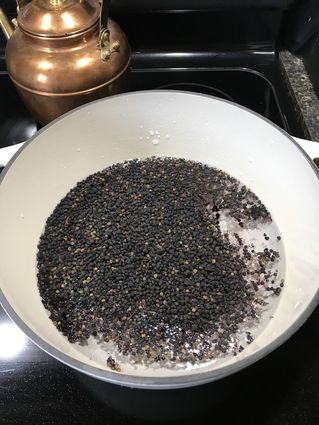Elderberry syrup can be made at home
April 2, 2020
For decades, the elderberry has been used for medicinal purposes to help aid in maintaining a healthy immune system. Traditionally, Native Americans considered the elderberry plant a valuable healing tree. Although there's not an extensive amount of documentation, Native Americans used this plant to treat a number of ailments, from rheumatism and fever, to infections and burns. Early Europeans have used the plant for many of the same needs.
Today, elderberry is known to be one of the most commonly used medicinal plants around the world, according to a study by the Cleveland Clinic in Ohio. Often made into a tincture, juice or a syrup, it is often taken as a supplement to treat cold and flu symptoms. The most common elderberry variety used in supplements today is called Sambucus nigra, also known as European elderberry, or black elder.
While the berries do have a tart taste, they need to be cooked prior to being eaten. This is because the raw berries, and bark and leaves of the plant are known to be poisonous and can cause stomach problems when not properly prepared. The small amounts of lectins found in the berries can cause an upset stomach and diarrhea, if too much is eaten.
Furthermore, the plant contains a substance called cyanogenic glycosides, which in some cases can release cyanide. This toxin is also found in almonds and apricot seeds. Luckily, the toxic substances can be safely removed by cooking the berries.
Elderberries are low in calories and packed with antioxidants, plus they contain many nutritional benefits. They are packed with vitamin C and they are high in dietary fiber. The berries are a good source of phenolic acid, a mighty antioxidant that helps prevent damage from free radical oxidation. The berries are also rich in anthocyanins. This compound is what gives the berries their characteristically dark, purple color. Anthocyanins are also strong antioxidants with anti-inflammatory effects. Studies have shown that elderberries have been known to help reduce the length and severity of flu and cold symptoms.
Please research all safety precautions prior to consumption. You will see many adaptations to elderberry syrup recipes. However, the ingredients are all similar when making a syrup. This recipe uses dried elderberries and makes about 3 cups of syrup.
Ingredients:
2 cups dried elderberries
Honey – about 2 to 3 cups
1 Tbsp. ground ginger
1 Tbsp. ground cinnamon
A strainer bag or cheese cloth to strain the berries
Airtight jar
In a large pot, combine 2 cups dried elderberries with 4 cups water.

The stove should be set on a low-medium heat, enough to simmer the berries and water but not boil.
Add in ginger and cinnamon.
Continue to simmer until the liquid has reduced by half in volume, which will take around 30 minutes. This can also take longer, depending on the stove settings. As the berries soften and water reduces, the syrup becomes more concentrated.
Stir occasionally, you can press the berries against the side of the pot to help squeeze out more juice.
Once the liquid has reduced to half, it is time to strain the berries.
Remove from the heat and let cool slightly, so you don't burn yourself. However, you still need the syrup to stay warm enough to melt the honey.
A little at a time, pour the mixture into the strainer.
Whatever method you use to strain the berries, is up to you.
A wooden spoon will work, as well as your hands. Please note, the berries will dye your hands for about a day or two.
You want to extract as much juice as possible.
Measure the strained liquid in a measuring cup, noting the volume, and then pour back into the pot, but do not turn the heat back on.
While the mixture is still warm, you will want to add in an equal amount of honey to the volume of juice you have. This should be about a three to three cup ratio. That all depends on how much straining you were able to do.
While that may seem like a lot of honey, the sugar will act as a preservative. You are more than welcome to reduce the amount of honey by three quarters the amount. This should still be enough to preserve the syrup and take away the tarte taste of the berries.
The next step is to bottle and store your syrup in the refrigerator. The syrup will stay good up to three months.
Take a spoon full one to two times a day for preventive measures.




Reader Comments(0)